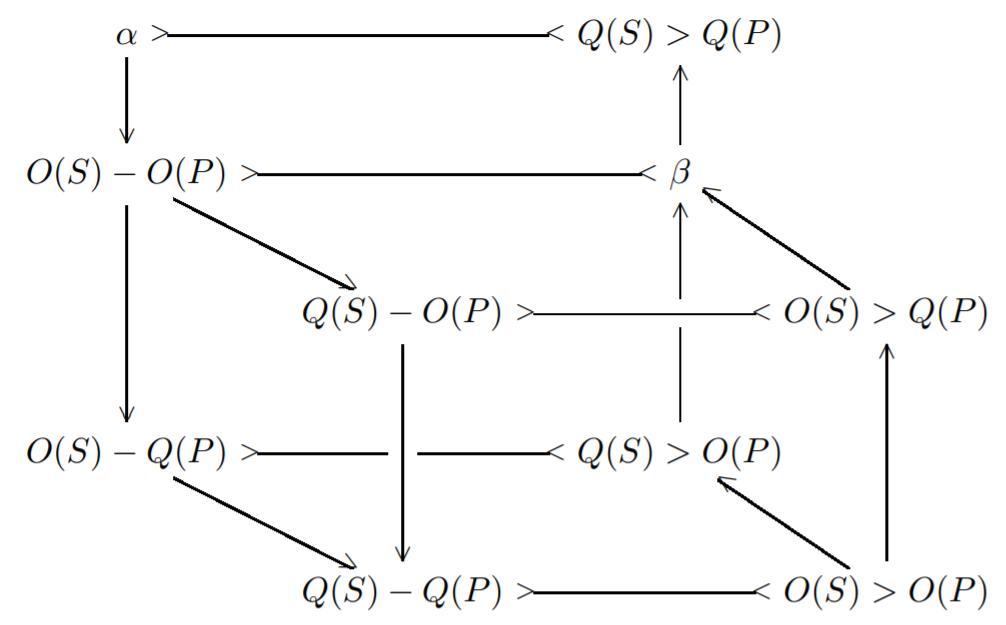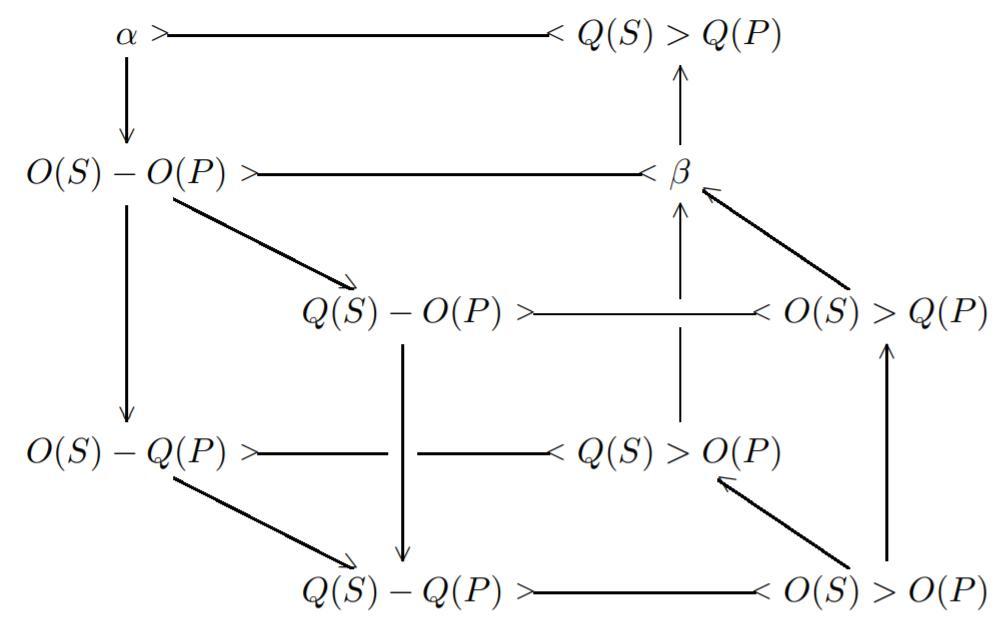
Ploucquet's ''Refutation'' of the Traditional Square of Opposition (2008), p. 57
by Lenzen, Wolfgang

Copyright according to our policy
Caption
- “True” logical relations between the formulas of Ploucquet’s logic.
- Aristotelian family
- Buridan Sigma-4
- Boolean complexity
- 5
- Number of labels per vertex (at most)
- 1
- Analogy between (some) labels of the same vertex
- No
- Uniqueness of the vertices up to logical equivalence
- No
- Errors in the diagram
- No
- Shape
- Three Dimensional Shape (irregular)
- Colinearity range
- 0–1
- Coplanarity range
- 0
- Cospatiality range
- 0
- Representation of contradiction
- By some other geometric feature
Logic
Geometry
- Conceptual info
- No
- Mnemonic support (AEIO, purpurea ...)
- No
- Form
- none
- Label type
- symbolic
- Symbolic field
- logic
- Contains partial formulas or symbols
- No
- Logical system
- syllogistics
Vertex description
Edge description
- Diagram is colored
- No
- Diagram is embellished
- No
- Tags
- quantification of the predicate
Style
Additional notes
- O and Q stand for 'omnis' and 'quidam', respectively. Furthermore, - and > stand for 'est' and 'non est', respectively. (Cf. p. 48.)
Note: the identification of this diagram as a Buridan sigma-4 (of Boolean complexity 5) depends on an interpretation of the formulas O(S) - O(P) and Q(S) > Q(P) that is different from the one given in the article. For example, we interpret O(S) - O(P) as follows: $\forall x \forall y (Sx \to (Sy \to x=y))$, whereas Lenzen interprets this formula as the conjunction of $\forall x(Sx \to Px)$ and $\forall x(Px \to Sx)$ (cf. p. 56). Furthermore, note that on our interpretation, $\alpha$ is actually equivalent to O(S) - O(P), and \beta is actually equivalent to Q(S) > Q(P).